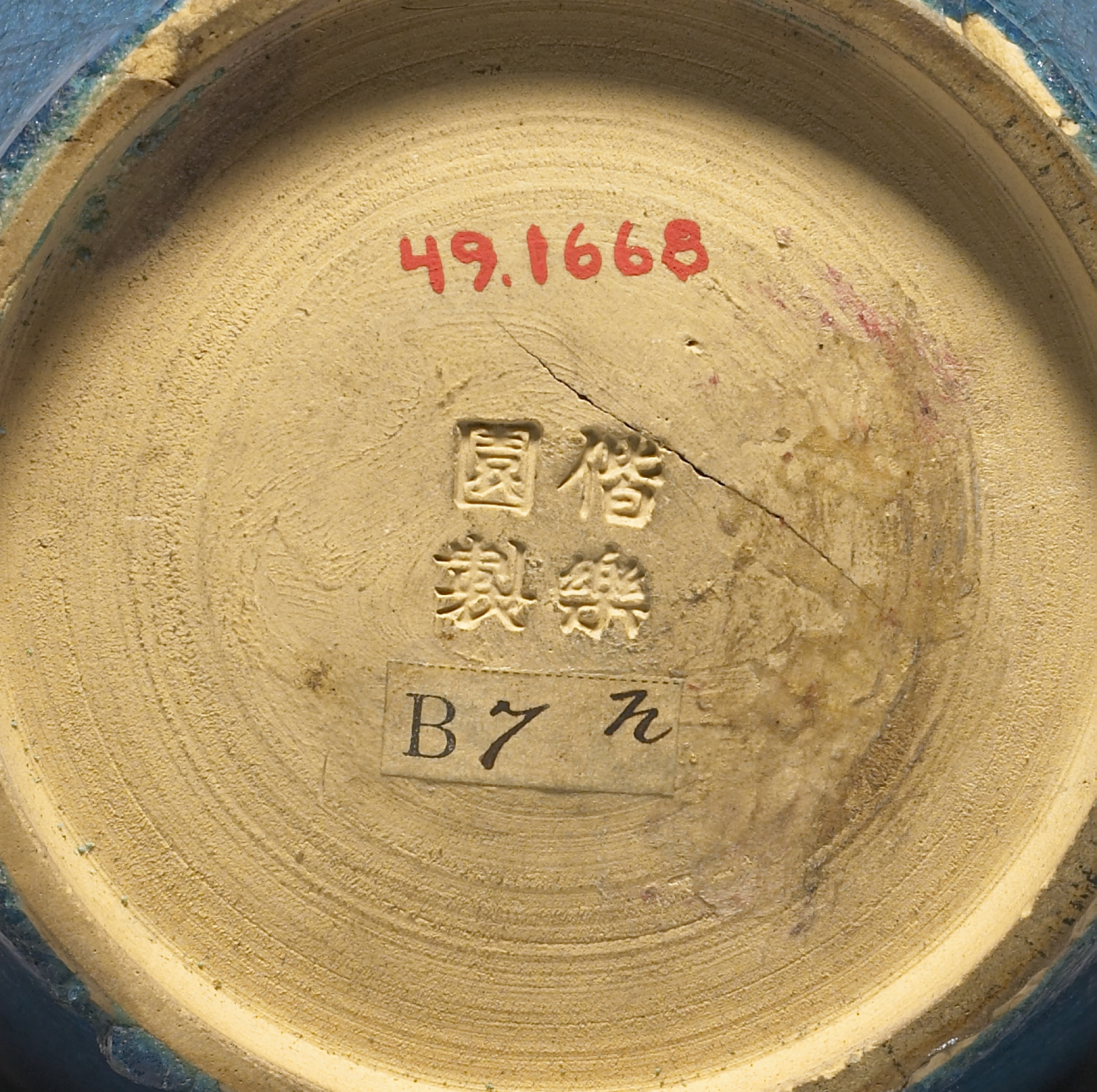Vase (kabin)
(Japan and Korea )
This vase was made at the Kairakuen kiln which was the "garden kiln" sponsored by the Kii branch of the Tokugawa house, in Kii province. Like the Rakurakuen kiln, it operated irregularly (firing just four times between 1819 and 1836), drawing upon the services of potters from various Kyoto workshops. Kairakuen products reflect a marked revival of interest in Chinese ceramics in the late 18th and early 19th centuries.
This vase, with its restrained shape and overall turquoise enamel glaze, follows Qing [Ch'ing] dynasty ceramic models. The design of the four-character mark, "Made at Kairakuen," imitates enamel four-character seals appearing on Qing [Ch'ing] imperial wares.
Inscription
Provenance
Provenance (from the French provenir, 'to come from/forth') is the chronology of the ownership, custody, or location of a historical object. Learn more about provenance at the Walters.
Centennial Exhibition, Philadelphia, 1876; William T. Walters, Baltimore, 1876, by purchase; Henry Walters, Baltimore, 1894, by inheritance; Walters Art Museum, 1931, by bequest.
Exhibitions
| 1876 | Centennial Exhibition Philadelphia. Memorial Hall, Philadelphia, Philadelphia. |
Geographies
Japan, Wakayama (Place of Origin)
Measurements
H: 9 7/8 in. (25.1 cm)
Credit Line
Acquired by William T. Walters, 1876
Location in Museum
Not on view
Accession Number
In libraries, galleries, museums, and archives, an accession number is a unique identifier assigned to each object in the collection.
In libraries, galleries, museums, and archives, an accession number is a unique identifier assigned to each object in the collection.
49.1668




